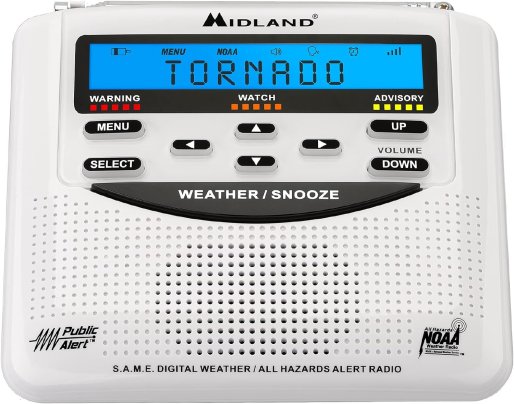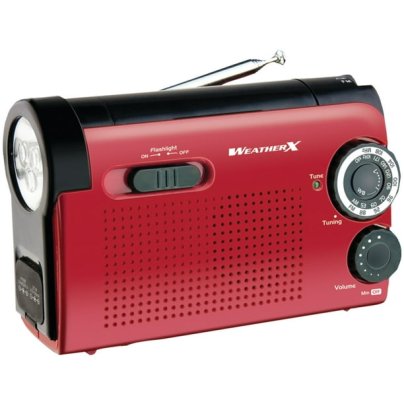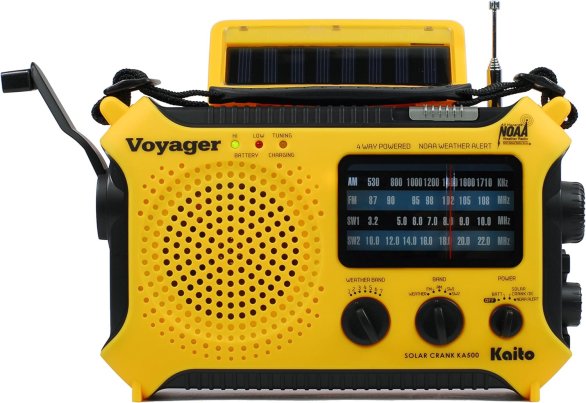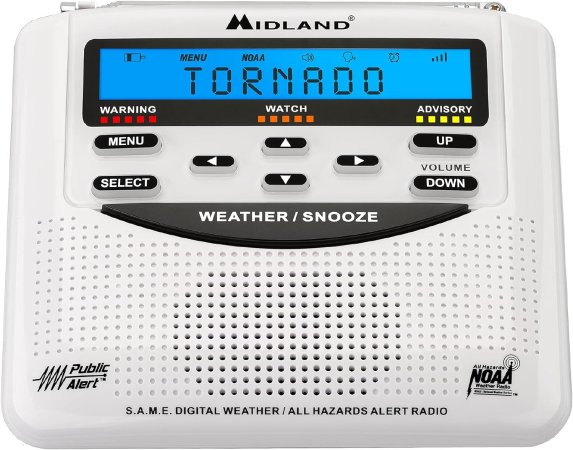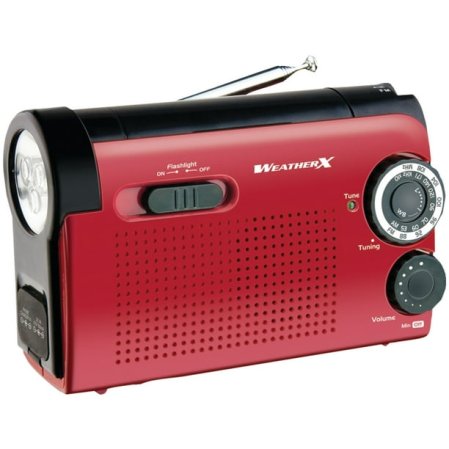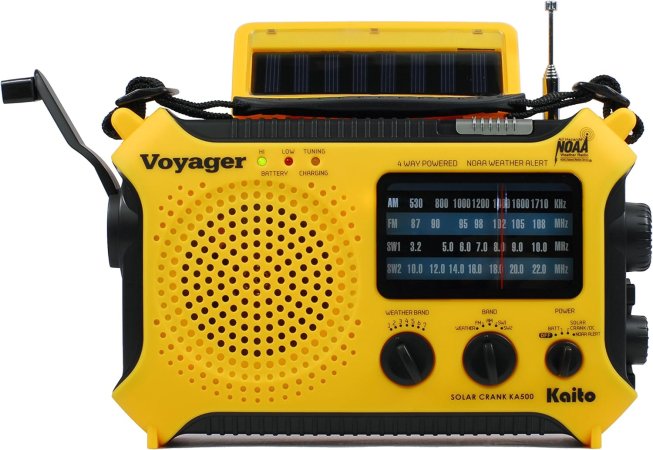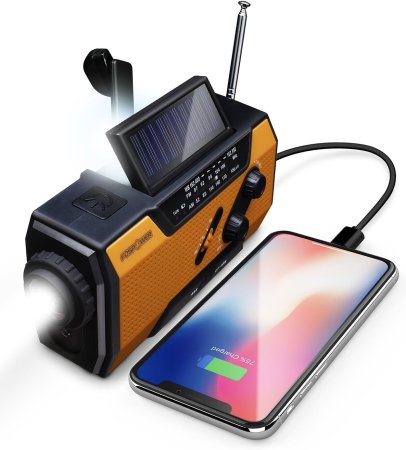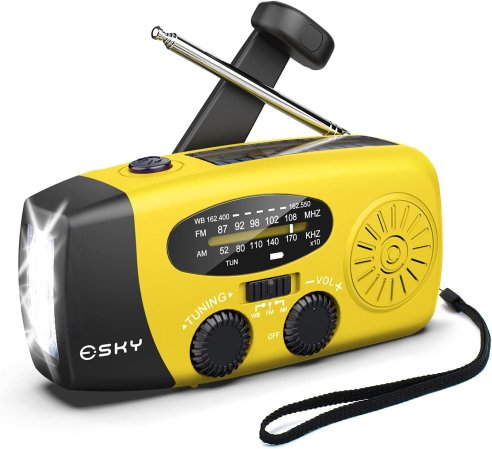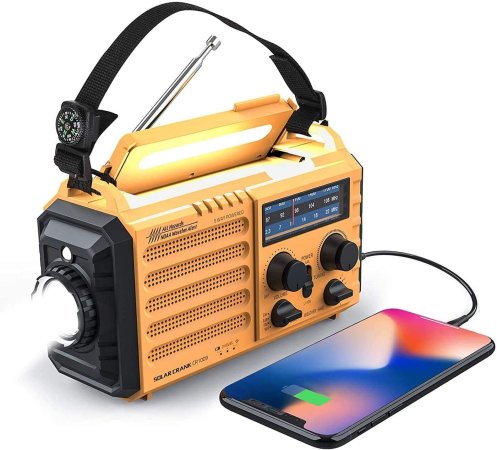We may earn revenue from the products available on this page and participate in affiliate programs. Learn more ›
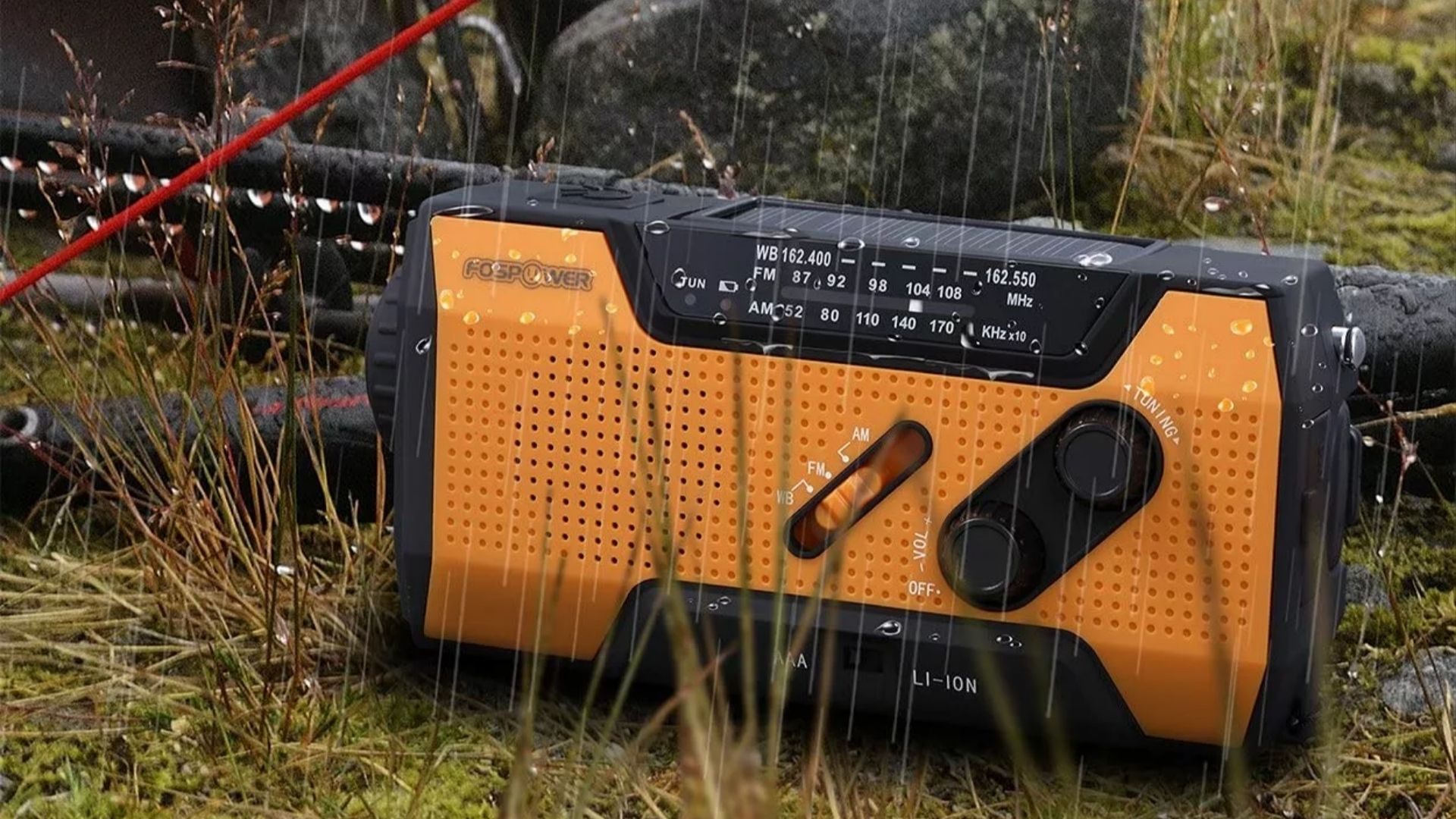
You probably have a pretty solid emergency roadside kit somewhere in your car. Packed with essentials that will get you through unplanned events, these kits are affordable and should always be on hand. But one thing most emergency roadside kits don’t come standard with, however, is a compact emergency radio. These special radios are designed to work even when there’s no power, no contact with civilization, and limited radio coverage. Available in many different styles, emergency radios can run on renewable power sources like solar or hand cranking, cover standard AM/FM bands as well as weather radio, and potentially even broadcast important emergency alerts. Whether for your home, car, boat, or RV, having access to a working emergency radio can make a huge difference during an emergency. Don’t be caught without one.
You probably have an emergency roadside kit somewhere in your car. Packed with essentials that will get you through unplanned events, these kits are affordable and should always be on hand. But one thing most emergency roadside kits don’t come standard with is a compact emergency radio. These special radios are designed to work even when there’s no power, no contact with civilization, and limited radio coverage. Available in many styles, emergency radios can run on renewable power sources like solar or hand cranking, cover standard AM/FM bands as well as weather radio, and potentially even broadcast important emergency alerts. Whether for your home, car, boat, or RV, having access to one of the best emergency radios can make a huge difference when it counts.
Summary List
- Best Overall: Midland NOAA Emergency Weather Alert Radio
- Best Value: WeatherX Weatherband AM/FM Radio and Flashlight
- Best Premium: Kaito Voyager Five-Way Powered Emergency Radio
- Most Versatile: FosPower Emergency Solar Hand-Crank Portable Radio
- Most Durable: Esky Emergency Radio
- Most Ergonomic: Supersonic Five-Way Emergency Solar/Hand-Crank Radio
- Best Hand-Crank Radio: Raynic Solar Hand-Crank Emergency Radio
Our Methodology
When it comes to choosing a top-of-the-line, reliable emergency radio that is sure to keep you informed and up to date on all current events, there are quite a few options to weed through. In order to narrow the field, I decided to stick with name brands you’re probably familiar with. These companies have a solid track record of providing reliable, functional, and high-quality products. I wanted to provide a variety of different price options so that there would be a good option to suit any budget. I also selected only those units that have the most up-to-date technology and user-friendly options. For more about our selection criteria and methodology, check out The Drive’s About page.
Best Emergency Radios: Reviews & Recommendations
Best Overall
Midland NOAA Emergency Weather Alert Radio
Pros
- 25 country memory system
- 90-dB siren More than
- 60 emergency alerts
Cons
- Concern over station strength
- Battery operated only
Best Value
WeatherX Weatherband AM/FM Radio and Flashlight
Pros
- Affordable
- LED flashlight and cell phone charger
- Battery or hand-crank powered
Cons
- Weak signal strength
- Battery operated only
Best Premium
Kaito Voyager Five-Way Powered Emergency Radio
Pros
- 14.5-foot telescoping antenna
- Mobile battery charger
- Reading light and S.O.S. beacon
Cons
- Expensive
- Hand crank could be more sensitive
Most Versatile
FosPower Emergency Solar Hand-Crank Portable Radio
Pros
- Smartphone charger
- Multiple power sources
- Flashlight and a reading light
Cons
- Lacks shortwave capability
- Solar panel could be more efficient
Most Durable
Esky Emergency Radio
Pros
- Compact enough to fit in your glove compartment
- Ultra-durable housing
- Water-resistant
Cons
- Needs a stronger built-in receiver
- Could use a taller antenna to access NOAA stations from further away
Most Ergonomic
Supersonic Five-Way Emergency Solar/Hand-Crank Radio
Pros
- Features a large flashlight
- Ergonomic carrying handle
- Charges smartphones
Cons
- Tips over easily
- Lacks telescoping antenna
Best Hand-Crank Radio
Raynic Solar Hand-Crank Emergency Radio
Pros
- Carrying strap
- Built-in compass
- Strong hand crank
Cons
- Lights drain power quickly
- Tough to get clear reception
Our Verdict on the Best Emergency Radios
When it comes to the ideal combination of reliability, durability, functionality, and price, the Midland NOAA Emergency Weather Alert Radio is our top pick overall. For a great budget-friendly pick and good addition to your car or truck emergency roadside kit, check out the WeatherX Weatherband AM/FM Radio and Flashlight.
What to Consider When Buying an Emergency Radio
With so many options for emergency radios on the market, it can be difficult to judge the ones that truly deliver reliable and dependable results. You don’t want to get stuck with a piece of junk that fails you at the first sign of a true emergency. The following buying guide will outline exactly what to look for to ensure that you get the biggest bang for your buck and a unit that will provide hours of reliable information and data when you need it most.
Types of Emergency Radios
Weather Alert Radios
Weather radios are the most basic type of emergency radio. They work similarly to smoke detectors by automatically alerting you to weather advisories or other non-weather-related emergencies by emitting loud sounds, flashing bright lights, or both. These radios issue alerts whether they’re turned on or not. The drawback to this type of radio is that many models need a reliable power source to function properly, so it’s not ideal in a climate with frequent and prolonged power outages. Consider buying one with a hand-crank as a back-up power source.
Weather Band Radios
These radios are a step up from weather alert radios and they’re usually equipped with pre-programmed stations that specifically access NOAA emergency alert broadcasts, allowing you to get up-to-date information on weather-related emergencies, mandatory evacuations, power outages, flooding, and civil or public emergencies. These radios will also provide information about weather warnings and watches in non-emergent situations. They usually have multiple methods of recharging, so you don’t need electricity to run them. Their drawback is that they have to be turned on in order to issue you vital information. They don’t offer an automatic emergency alert.
AM/FM Emergency Radios
These emergency radios take the weather radio one step further. They can access local AM/FM radio stations and some are capable of accessing short sideband, or SSB radio channels, making them the most complete source of emergency information. They usually have multiple methods of charging, as well as added features, such as flashlights and S.O.S. lighting. They can be stationary desktop models or more portable handheld designs.
Pricing
For less than $20, you can get a compact and relatively reliable emergency radio that may or may not include AM/FM capabilities. Features such as flashlights, solar charging, and reading lights aren’t usually included in this price point. For $20 to $50, you can get a wide selection of durable and dependable emergency radios that offer a good mix of accessory features, including multiple charging sources, smartphone chargers, built-in compasses, and more. If you spend more than $50, you’ll get the emergency radios that include all the bells and whistles. If you want Morse code capability, digital tuners, shortwave radio capacity, and loudspeakers, this is where to look.
FAQs
You’ve got questions. The Drive has answers.
A: The best emergency radio is one that has multiple methods of recharging as well as multiple sources through which to get your emergency information and alerts. It will also come equipped with sound and light alert modes to make sure you don’t miss anything important.
A: Look for a radio that is manufactured by a known and trusted source that’s been in the industry for a while. Make sure it’s durable, water-resistant, and comes with multiple charging options, emergency light, and alerts. Also, choose one that’s portable.
A: If your emergency radio comes equipped with AM/FM capabilities, you can use it to listen to local stations. Otherwise, whenever there is a weather event or public alert, turn your emergency radio on to hear up-to-date information and instruction.
